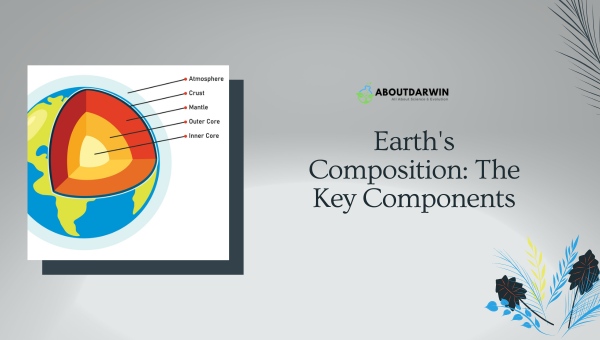Physical Address
304 North Cardinal St.
Dorchester Center, MA 02124
The Earth, our remarkable home, is a complex entity shaped by its unique composition and density. Beneath our feet lies a layered structure, including the crust, mantle, and core, each contributing to the planet’s overall characteristics.
The interplay of these layers not only defines Earth’s geological activity but also influences the very essence of life itself.
As we explore the intricate details of what makes up our planet, we uncover insights that deepen our appreciation for the world around us. The journey into Earth’s mysteries is just beginning.
Contents
The density of Earth is a crucial aspect of its physical properties, influencing everything from geological processes to the planet’s gravitational pull. Earth is the densest planet in our solar system, with an average density of approximately 5.513 g/cm³.
This density varies significantly across different layers of the Earth, reflecting the composition and state of materials found within each layer. Earth’s density helps scientists gain insights into its structure and formation.
Comparison with Other Planets: For context, here are the average densities of other planets in our solar system:
| Planet | Density (g/cm³) |
|---|---|
| Mercury | 5.43 |
| Venus | 5.243 |
| Mars | 3.934 |
| Jupiter | 1.326 |
| Saturn | 0.687 |
| Uranus | 1.270 |
| Neptune | 1.638 |
| The Sun | 1.408 |
Earth’s density provides valuable insights into its geological behavior and evolution, as well as its interactions with other celestial bodies in the solar system.
Also Read: 10 Asthenosphere Facts: Exploring the Earth’s Mysterious Layer
Earth is a complex planet with a layered structure that significantly influences its geology, atmosphere, and the existence of life. Understanding its composition is essential for grasping how geological processes operate and how they affect the environment.

The Earth is primarily composed of four distinct layers: the crust, mantle, outer core, and inner core. Each layer has unique physical and chemical properties that contribute to the planet’s overall dynamics.
Below is a detailed overview of these layers and their compositions.
The outermost layer, varying in thickness from about 5 km under oceans to about 70 km under continents. It is primarily composed of silicate minerals, with the most abundant elements being:
Earth’s interior is structured into several distinct layers, each with unique physical and chemical properties. These layers is crucial for comprehending geological processes, tectonic activity, and the overall dynamics of our planet.
The Earth consists of the crust, mantle, outer core, and inner core, each contributing to the planet’s formation and behavior. Below is an in-depth look at each layer.
The Earth’s crust is the outermost layer of our planet, forming the surface on which we live. It is relatively thin compared to the other layers, measuring between 5 km beneath oceans and up to 70 km beneath continents.
This layer is not uniform; it consists of tectonic plates that float on the semi-fluid mantle below, leading to geological activity like earthquakes and volcanic eruptions. The crust is essential for supporting life, containing soil, water bodies, and diverse ecosystems.
Located beneath the crust, it extends to about 2,900 km deep and is composed mainly of silicate rocks rich in magnesium and iron. The mantle is semi-solid and allows for convection currents that drive plate tectonics.
This layer is liquid and composed mainly of iron and nickel, with temperatures reaching approximately 5,000 °C. The movement of this molten metal generates Earth’s magnetic field, which protects the planet from solar radiation.
The innermost layer, solid despite extreme temperatures of around 7,000 °C due to immense pressure. It is primarily made of iron and nickel, and its solid state contributes to the generation of Earth’s magnetic field through its rotation.
Each layer plays a critical role in Earth’s geological activity and contributes to phenomena such as earthquakes, volcanic eruptions, and the creation of mountain ranges. These layers helps us grasp not only Earth’s structure but also its dynamic processes over geological time.
The intricate composition of Earth reveals a diverse structure that significantly influences its overall density. Each layer—crust, mantle, and core—contributes uniquely to the planet’s characteristics, with the core primarily composed of iron and nickel, while the mantle is rich in magnesium and silicon.
These components not only enhances our knowledge of geological processes but also aids in predicting natural phenomena. This exploration into Earth’s makeup underscores the importance of its density in shaping our environment and sustaining life as we know it.